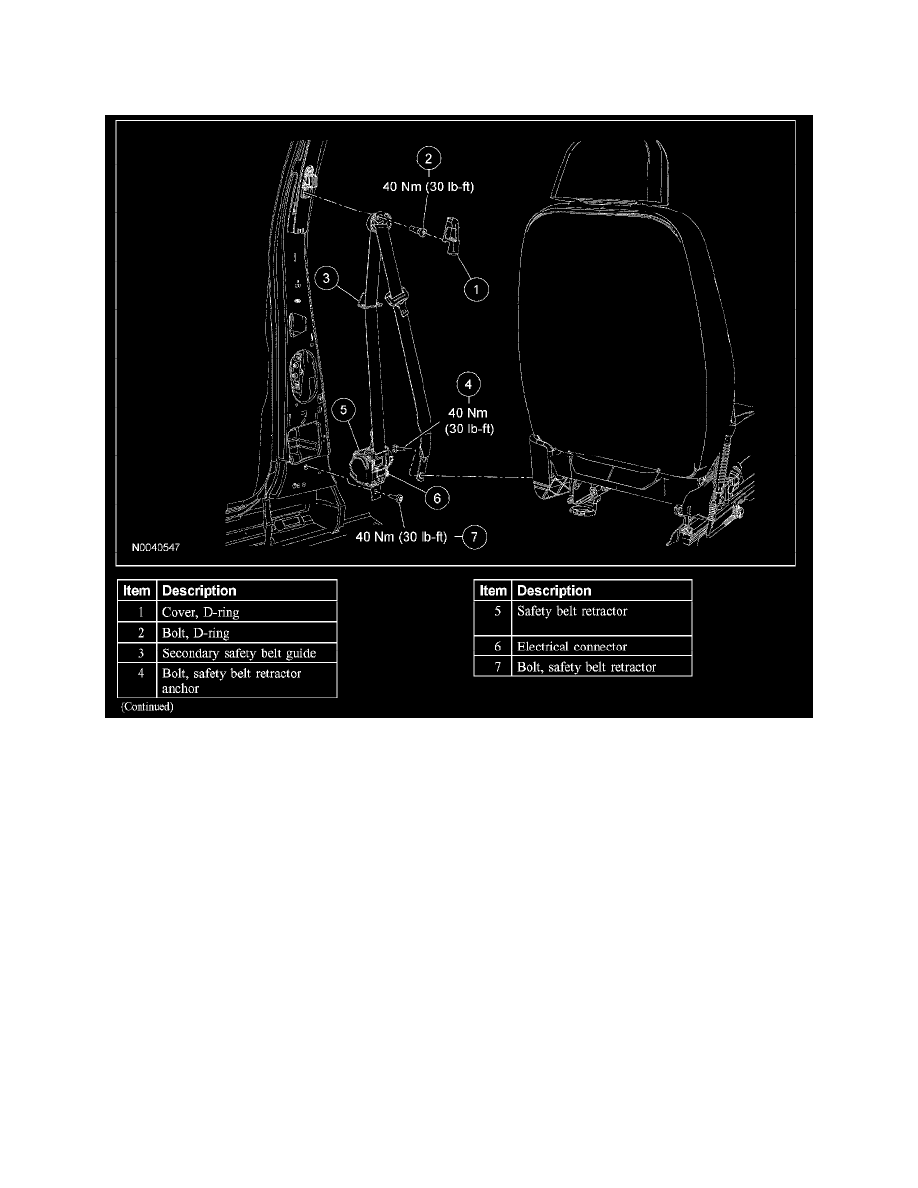Mountaineer 2WD V8-4.6L VIN 8 (2006)

Seat Belt Retractor: Service and Repair
Safety Belt Retractor - Front
SAFETY BELT RETRACTOR - FRONT
Removal and Installation
WARNING:
-
All safety belt assemblies (including retractors, belt tension sensors [BTS] if equipped, buckles, shoulder belt height adjusters [if
equipped], child safety seat tether attachments and attaching hardware) should be inspected after any collision. All new belt assemblies
should be installed unless a qualified technician finds the assemblies show no damage and operate correctly. Belt assemblies not in use
during a collision should also be inspected and new assemblies installed if either damage or incorrect operation is noted.
The automatic locking retractor (ALR) feature of the safety belt retractor must be checked by a qualified technician to verify that the
ALR feature for a child safety seat is functioning correctly, in addition to other checks for correct safety belt system function. A new belt
and retractor assembly must be installed if the safety belt assembly's ALR feature or any other safety belt function is not operating
correctly when inspected according to the functional inspection procedures. Failure to install a new belt and retractor assembly could
increase the risk of injury in collisions.
-
The safety belt retractor is a pyrotechnic device. Always wear safety glasses when repairing an air bag equipped vehicle and when
handling a safety belt buckle pretensioner or safety belt retractor pretensioner. Never probe a pretensioner electrical connector. Doing so
could result in pretensioner or air bag deployment and could result in personal injury.
-
To reduce the risk of personal injury, do not use any memory saver devices.
NOTE:
-
The air bag warning lamp illuminates when the restraint control module (RCM) fuse is removed and the ignition switch is ON. This is normal
operation and does not indicate a supplemental restraint system (SRS) fault.
-
The SRS must be fully operational and free of faults before releasing the vehicle to the customer.
-
Repair is made by installing a new part only. If the new part does not correct the condition, install the original part and carry out the diagnostic
